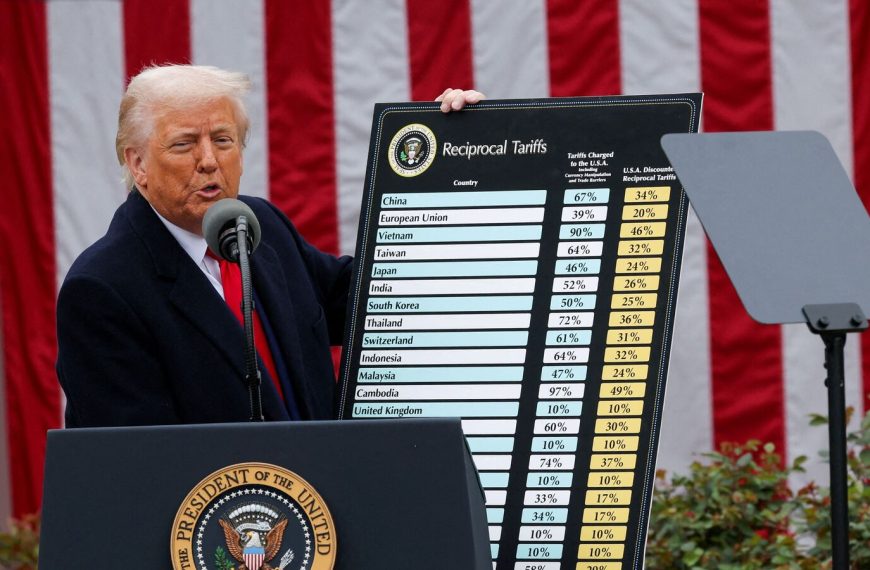As the financial year 2025 (FY25) draws to a close, Indian equities are bracing for continued volatility, largely influenced by an impending policy decision from U.S. President Donald Trump. Investors are particularly anxious about the announcement of new tariffs set for April 2, adding layers of uncertainty to the already turbulent market landscape. Despite these challenges, market analysts remain hopeful for a rebound in the latter half of FY26, fueled by a potential rise in corporate earnings and a renewed influx of foreign investments.
Market Trends in FY25
During FY25, the Sensex and Nifty indices managed to gain roughly 5% each, a stark decline from the impressive 28% increase recorded in the previous year. The market initially soared until September, but significant selling pressure from foreign portfolio investors (FPIs) significantly dampened investor sentiment.
- Foreign Selling: Persistent FPI outflows led to a substantial reduction in market gains.
- Domestic Support: On the flip side, domestic institutional investors, especially mutual funds, played a crucial role in mitigating the downturn.
- March Recovery: Notably, a strong market recovery in March helped limit overall losses.
The broader market was also affected, with the Nifty Mid-cap 150 and Small-cap 250 indices only rising 5.7% and 2.3%, respectively, throughout the fiscal year. The second half witnessed a significant correction, with these indices dropping 14.5% and 18% from their September highs. Many stocks experienced declines of 30-50% from their peaks in 2024, leading to a cautious atmosphere among investors focused on capital preservation.
Looking Ahead: Signs of Recovery?
Market analysts suggest that the current state of uncertainty may continue for the next three to six months, especially if a recession occurs in the U.S., which could further disrupt investor confidence. However, should global conditions stabilize, Indian equities could once again attract foreign investors looking for long-term growth opportunities.
- Domestic Resilience: The beginning of FY26 may appear uncertain, but indicators such as improving corporate earnings and stable macroeconomic fundamentals hint at a potential market recovery in the latter part of the fiscal year.
Challenges on the Horizon for FY26
As India embarks on FY26, optimism about its growth trajectory coexists with caution regarding global uncertainties that could hinder Indian equities. Experts emphasize the need for vigilance as geopolitical tensions, shifts in trade policies, and macroeconomic challenges loom large.
According to Alekh Yadav, Head of Investment Products, Indian markets are not immune to global fluctuations. The uncertainty surrounding U.S. trade policies and ongoing inflation concerns could spill over into Indian markets, potentially triggering capital outflows that heighten volatility.
- Impact of U.S. Trade Policies: As one of India’s largest export markets, any changes in U.S. tariffs may pose risks to Indian sectors, including textiles, pharmaceuticals, and agriculture.
- External Challenges: Stricter trade policies could dampen exports, impacting corporate earnings and overall market sentiment.
On a positive note, domestic economic indicators project a growth rate of 6.5% in FY26, driven by strong local demand and government-led capital expenditure initiatives. Om Ghawalkar, a market analyst at Share.Market, believes that the current economic slowdown is temporary and could reverse, leading to enhanced earnings growth in key sectors.
Earnings Season and Market Sentiment
As the earnings season approaches, corporate performance will be critical in shaping market direction for FY26. Analysts will be keenly observing key industries to assess overall economic momentum, with strong earnings potentially boosting investor confidence, while weaker results might lead to market fluctuations.
- Sector Performance: The performance of various sectors is anticipated to vary, with IT and export-driven industries possibly facing more challenges due to global pressures, while sectors focused on domestic consumption may show resilience.
In conclusion, while the landscape for Indian equities remains challenging, a mix of domestic resilience and recovery prospects could pave the way for a more favorable market environment in the latter half of FY26.











